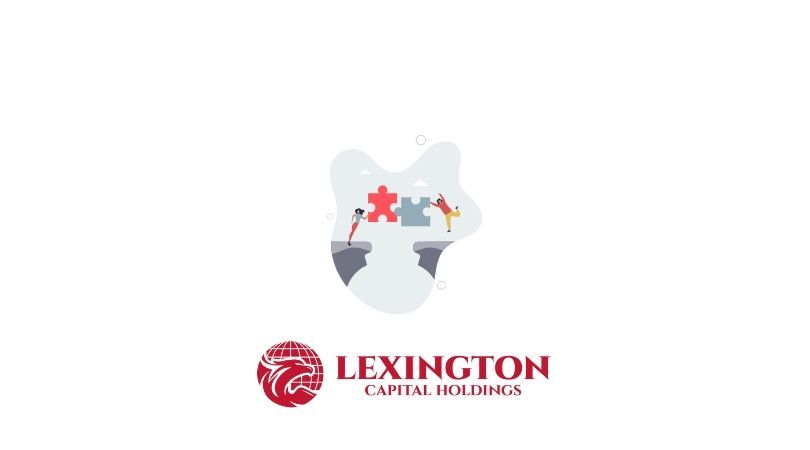Inflation Survival Guide: Practical Ways to Reduce Costs and Maintain Margins
Inflation Survival Guide: Practical Ways to Reduce Costs and Maintain Margins
Inflation is an inevitable economic challenge that can erode profit margins, increase operating costs, and put pressure on businesses of all sizes. As the cost of goods, services, and labor rises, companies must adapt their strategies to maintain profitability. Here’s a survival guide to help your business navigate the challenges of inflation by reducing costs and protecting your margins.
1. Analyze and Optimize Your Operating Costs
To combat inflation, start by conducting a thorough review of your operating expenses. Break down every cost, from utilities and office supplies to vendor contracts. Ask yourself whether these expenses are necessary, and identify areas where you can negotiate better terms or cut back. Here are a few key areas to evaluate:
Rent and Utilities: If possible, renegotiate lease terms or switch to energy-efficient equipment to lower utility bills.
Vendor Relationships: Build long-term relationships with your suppliers to secure more favorable pricing or bulk discounts.
Automation: Automating repetitive tasks like billing, payroll, and inventory management can reduce the need for manual labor and improve operational efficiency.
2. Adjust Pricing Strategies Thoughtfully
As inflation drives up costs, passing these increases on to customers can feel like an inevitable response. However, raising prices without a well-thought-out strategy can backfire. Instead of blanket price hikes, consider:
Tiered Pricing: Offer different pricing packages or product tiers to cater to various customer budgets, allowing you to increase prices on premium offerings while keeping lower-cost options available.
Product Bundling: Bundle products or services together at a discounted rate to encourage higher spending without appearing to raise prices.
Value-Based Pricing: Focus on communicating the value your business provides, rather than simply the cost of your goods or services. Customers are often willing to pay more if they believe they’re getting more in return.
3. Control Labor Costs Without Sacrificing Quality
Labor is often one of the biggest expenses for businesses, and wages tend to rise in times of inflation. Instead of cutting staff or reducing quality, consider alternative ways to manage labor costs:
Cross-Training Employees: Equip your employees with multiple skills so they can take on different roles as needed. This reduces the need to hire additional staff while maintaining flexibility in your operations.
Incentive-Based Pay: Shift a portion of employee compensation to performance-based bonuses or commissions. This aligns employee pay with business outcomes and helps control fixed salary costs.
Remote Work: If feasible, continue offering remote work options. This can lower office space costs and allow you to recruit from regions with lower wage demands.
4. Improve Supply Chain Efficiency
Supply chain disruptions are common during inflationary periods, causing delays and further cost increases. Focus on making your supply chain more resilient by:
Diversifying Suppliers: Relying on a single supplier can expose you to price hikes or shortages. Build relationships with multiple suppliers to increase bargaining power and ensure steady access to resources.
Local Sourcing: Consider sourcing materials from local suppliers to reduce shipping costs and avoid delays.
Inventory Management: Implement just-in-time inventory systems or smarter forecasting tools to prevent overstocking and reduce waste.
5. Adopt a Lean Business Model
The lean business model is designed to maximize value while minimizing waste. During inflationary times, this philosophy can be particularly valuable. Adopt lean principles by:
Streamlining Processes: Cut out unnecessary steps in your business processes that don’t add value. This can improve efficiency and reduce costs.
Outsourcing Non-Core Functions: Consider outsourcing certain functions like IT, marketing, or accounting to specialized providers rather than handling them in-house. Outsourcing can reduce overhead costs without sacrificing quality.
Embracing Technology: Invest in technology that helps automate tasks, reduce errors, and enhance productivity. For example, customer relationship management (CRM) software can improve sales and marketing efficiency, while cloud services can reduce the cost of physical infrastructure.
6. Enhance Customer Retention
During inflation, attracting new customers becomes more expensive due to rising marketing costs. Focus on retaining your current customer base through exceptional service and loyalty programs:
Loyalty Programs: Offer rewards to repeat customers, which incentivizes them to keep coming back and increases customer lifetime value.
Exceptional Customer Service: Great customer service builds loyalty and helps retain clients. Provide personalized experiences and be proactive in addressing customer needs.
Feedback and Engagement: Regularly seek feedback from your customers and implement their suggestions. This makes customers feel valued and encourages continued business.
7. Negotiate with Lenders and Creditors
As interest rates rise along with inflation, loan repayments can become a significant burden. Reach out to your lenders and creditors to explore flexible payment terms or refinancing options:
Renegotiate Debt: Approach your lenders to extend loan terms, reduce interest rates, or temporarily suspend payments during difficult periods.
Explore Alternative Financing: Consider options like lines of credit or equipment financing to access capital at more favorable rates.
8. Monitor Key Performance Indicators (KPIs)
In uncertain economic times, closely monitoring your financial metrics is essential to staying ahead. Keep an eye on key performance indicators such as profit margins, operating costs, cash flow, and inventory turnover. By staying proactive, you can quickly adjust your strategy when necessary, helping your business remain nimble and adaptive.
Inflation presents a serious challenge to businesses, but it also offers an opportunity to innovate and streamline operations. By reducing costs, optimizing pricing strategies, and maintaining a focus on efficiency, your business can not only survive but thrive during inflationary periods. Stay proactive, remain flexible, and embrace the opportunities for growth that come with the challenge of managing costs during inflation.

When you apply for business funding, your application goes through a critical stage—underwriting. This is where lenders evaluate risk and determine whether your business qualifies for financing, and under what terms. Understanding what underwriters look for can help you strengthen your application, avoid delays, and increase your approval odds.

Not every business enjoys a steady stream of income. For many companies—especially those in seasonal industries, contracting, or project-based work—revenue can shift dramatically from month to month. These ups and downs are normal, but they can make managing cash flow, payroll, and operating expenses challenging. At Lexington Capital Holdings, we understand that fluctuating revenue doesn’t mean instability—it just means you need the right financial tools to stay balanced and grow confidently.

The Challenge of Hyper-Growth For many startups, growth isn’t the problem—it’s managing it. Rapid scaling demands capital for hiring, marketing, technology, and operations. But too often, founders find themselves cash-strapped right when they need resources the most. Choosing the right financing strategy can be the difference between sustainable growth and burning out too soon.

When it comes to business financing, the terms you secure are just as important as the funding itself. Lower interest rates, flexible repayment schedules, and higher approval amounts can mean the difference between simply surviving and setting your business up to thrive. The good news? Business owners often have more negotiating power than they realize. At Lexington Capital Holdings, we’ve seen firsthand how preparation and strategy can help secure stronger terms. Here’s how you can do the same:

For many businesses, waiting on customer payments can feel like standing still when you’re ready to move forward. Delayed invoices, extended payment terms, or slow collections create cash flow gaps that make it harder to cover expenses, pay employees, or seize new opportunities. The truth is—even successful, profitable companies face this challenge. The key isn’t avoiding it, but managing it strategically with the right funding solutions

Securing business funding is a milestone—but the real impact comes from how you put that capital to work. Every dollar borrowed should fuel momentum, strengthen operations, and generate measurable returns. Unfortunately, too many businesses stop at “getting approved” and miss the chance to maximize their return on investment (ROI). At Lexington Capital Holdings, we believe funding isn’t just about access to capital—it’s about creating opportunity. Here’s how to ensure your financing delivers the highest ROI:

In today’s fast-paced business environment, standing out from the competition requires more than just great products and services—it takes strategy, timing, and smart financial decisions. One of the most overlooked tools in building and maintaining a competitive advantage is business financing. When leveraged correctly, financing doesn’t just help you “get by”; it can actually position your business to outpace competitors and capture new opportunities.

In business, surprises aren’t a matter of if—they’re a matter of when. Whether it’s a sudden equipment breakdown, an unexpected dip in sales, or a market shift that requires quick adaptation, unforeseen expenses can test even the most successful companies. The difference between thriving and struggling often comes down to how well you’ve prepared.

When most business owners hear the word debt, it sparks feelings of stress or risk. But here’s the truth—debt isn’t always a bad thing. In fact, when managed strategically, debt can become one of the most powerful tools to grow, stabilize, and scale your business. At Lexington Capital Holdings, we work with business owners every day who are navigating this very question: Is taking on debt the right move for me? Let’s break down the difference between “good” and “bad” debt so you can make informed financial decisions.

In today’s business world, financing options are everywhere—but choosing the right path can feel overwhelming. From traditional bank loans to alternative lending solutions, the fine print and fast-changing requirements often leave business owners spending more time deciphering funding terms than actually running their businesses. That’s where the value of a dedicated funding advisor truly shines. At Lexington Capital Holdings, we’ve seen firsthand how personalized guidance can transform the funding experience for business owners of all sizes.

